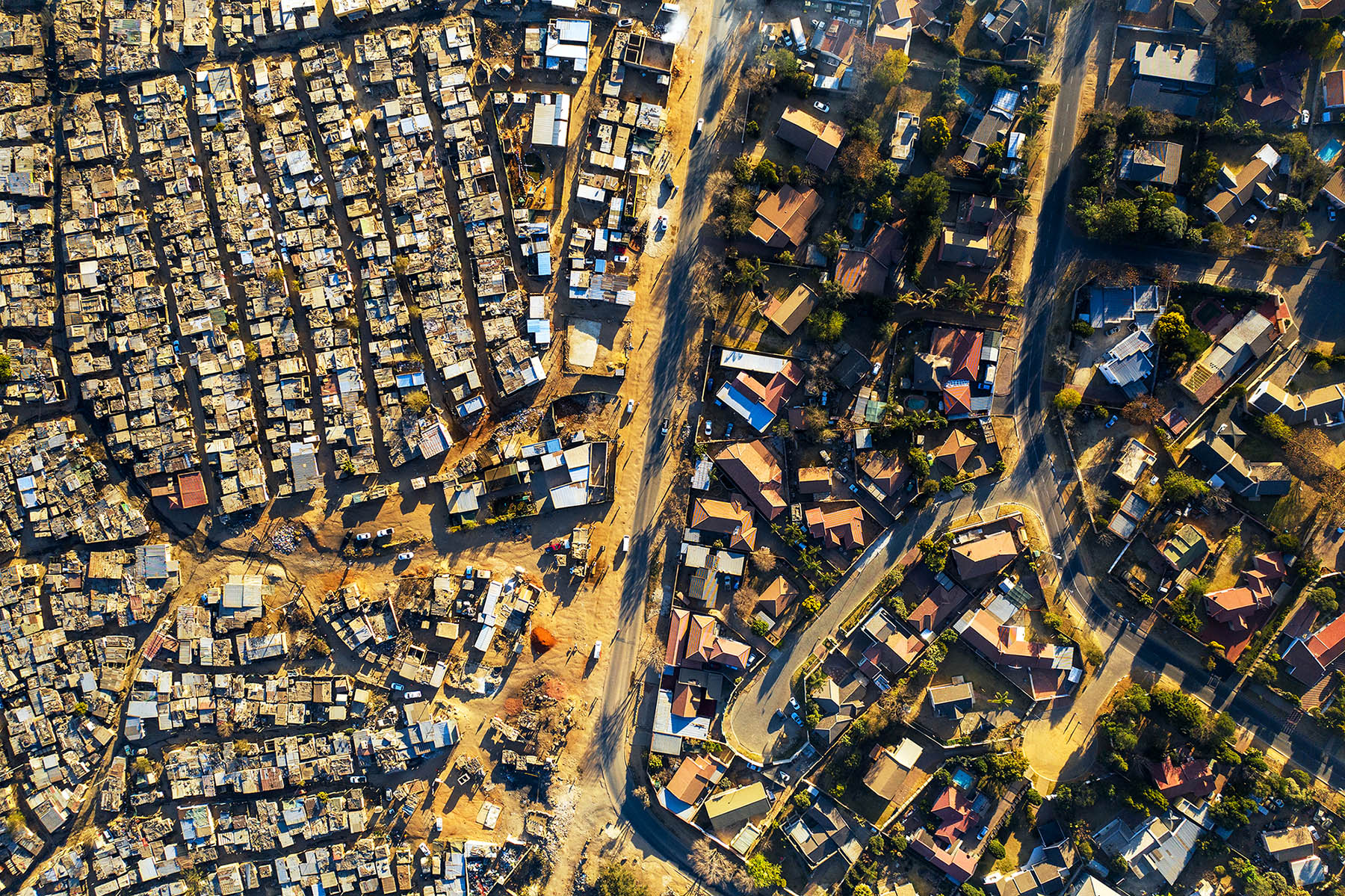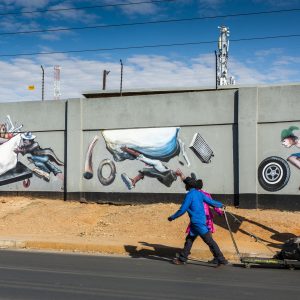Ordinary South Africans define a decent life
Arbitrary statistical tools for defining poverty – including the outmoded $1-a-day measure – are being overturned by models of dignity created by groups around the country.
Author:
26 November 2020

What will it take to shock South Africa into recognising the extent of the impoverishment that characterises daily life for millions of South Africans? What tipping point must be reached before the right to a decent life for all becomes a reality, and what have we lost in our common humanity that makes it all right to live with such inequalities daily? Have we become so used to statistics that we deaden ourselves to what it means to live in and with poverty? How else do we explain the ability of decision makers and policy crafters to continue day after day, as if the only crisis facing us is a recent and externalised virus?
In 2018, three independent think-tanks in South Africa came up with a novel way to better understand the reach and makeup of poverty in its many dimensions. After about five years of probing, reading and challenging our own thinking and that of other experts, we put away the reports and the formulae, the weighting and approximating of needs and thresholds and wants that make up the tools used by the experts in poverty studies. Instead, through 48 focus groups across the country, we asked a broad sampling of South Africans what they think are the essential things required to live a decent life. We asked people of different demographics and class, spatial location and language, to think about a decent life, a life of dignity. We did not ask about poverty.
The outcome was the development of the South African Decent Standard of Living measure. The work was supported by the Department of Social Development and the methodology chewed over by Statistics South Africa. The methodology is innovative and unique – and the findings are damning.
Defining poverty
For centuries, people have been fixated with the science of describing who is officially “poor” and who is not, and whether impoverishment is a personal failing or a systemic societal problem.
A concept of poverty can, for instance, refer to not having enough food to feel full every day. It can also refer to someone feeling embarrassed that they cannot afford the same kind of phone as their peers. Relative to your community, you can feel shamed, inadequate or not good enough for not having “enough” money. Absolute and relative poverty are very different, and yet both are real and extremely powerful. But we seem unable to conceptualise and describe in any detail what these states comprise.
In past decades, many people have mixed up the idea of definition and measure in the worst possible way, accepting the World Bank’s notion that poverty means $1 per person per day. This poverty measure is the average of 10 poverty lines, which were derived for the poorest countries in the world at a given time. Simultaneously, the national US poverty line was just over $11 per person per day. The $1 measure bears no relevance to need or context, and yet became a standard that overnight was used to decide who was “poor” and who was not.
Defining poverty is a political act that always involves an arbitrary and usually hidden choice about who gets what, and what, if anything, should be done about this.
Related article:
In South Africa, we have three poverty lines that were adopted by Statistics South Africa: the food poverty line, the lower-bound poverty line and the upper-bound poverty line. In mid 2020, these were respectively set at R585, R840 and R1 268 per person per month.
The setting and use of poverty lines in South Africa have a shaming history. Poverty measures were used to set and justify virtual slave wages under apartheid. According to Wiseman Magasela: “In the early 1970s, white industrials adopted the Poverty Datum Line as a standard against which to set the wages of Black workers. Academic and research institutes such as the Institute for Planning Research at the then University of Port Elizabeth, the Bureau for Market Research at the University of South Africa, the Department of Economics at the then University of Natal, all contributed in various ways in calculating the Poverty Datum Line and its derivatives for African and Coloured workers. According to Edward Batson, the man who pioneered the PDL in South Africa, the PDL represented a ‘sub-standard condition of living’, it was a standard that is ‘not human’, is not even ‘a minimum ideal’, and is only a ‘physiological minimum’ representing ‘existence at the lowest possible level’.”
The legacy of the minimalist nature of the poverty datum line can be found in the current national poverty lines – lines that are defined by “experts”. A United Nations Development Programme report published in 2020, the Covid-2019 Rapid Emergency Needs Assessment for the Most Vulnerable, describes the lowest of the three national poverty lines as referring to the “rand value below which individuals are not in a position to purchase or consume enough food to meet their minimum per-capita per-day energy requirement for adequate health”. In other words, people who fall below this food poverty line starve.
Improving lives
Statistics South Africa’s last official poverty report, found that 25.2% of people fell below this poverty line in 2015, and the percentage and number of people below this line has been rising steadily – even before the pandemic.
The National Development Plan in 2012 committed to moving everybody above the middle poverty line by 2030. In 2011, 36.4% of people fell below the middle line. This increased to 40% by 2015 and continues to increase, not decrease. It is interesting that in the June 2019 state of the nation address, the president said “no one would go hungry” by 2030. Was this a recalibration from the middle to the lowest poverty line as a goal?
This brings us closer to the concept of why a standard for improving people’s lives should be set by ordinary folk and not through an obscure and often arbitrary statistical measure.
The act of setting a measure is deeply embedded in power relations and notions and normative judgments of what people deserve and who deserves what. Because there is no agreement defining wellbeing, and because South Africa has such a terrible legacy of the use of statistical niceties to legitimise apartheid wages, it is important in our democracy to ensure the inclusion of non-experts in these critical deliberations. This is what motivated the development of the Decent Standard of Living measure.
Related article:
The Decent Standard of Living is a money amount that represents the median monthly income required to access the collection of goods and services, 21 in total, identified through the 48 focus groups as being essential for a life of dignity. In 2020, the median per capita monthly income is R7 541. Research found that only 3%, or about 1.7 million South Africans, would be able to obtain all 21.
The multidimensional reflection of what constitutes a decent life in South Africa is so much richer as a policy tool as well as a national statement than a minimalist head-count measure used in a poverty line.
Values of decency and dignity are the bedrock of the South African Constitution. In building back, we need to see a national commitment to moving beyond the minimalist poverty lines and an embrace of multidimensional poverty measure tools – including the Decent Standard of Living.
Isobel Frye is the director of the Studies in Poverty and Inequality Institute (SPII).


